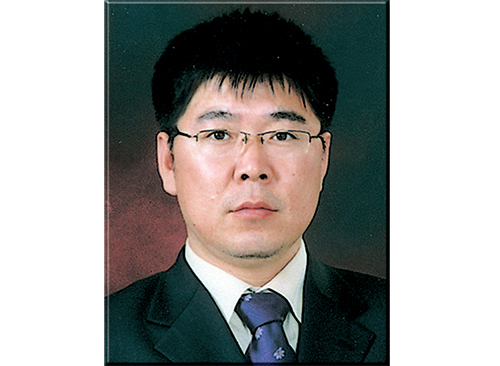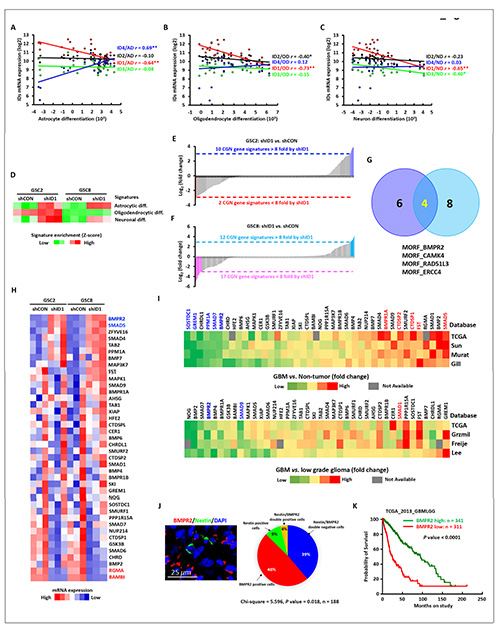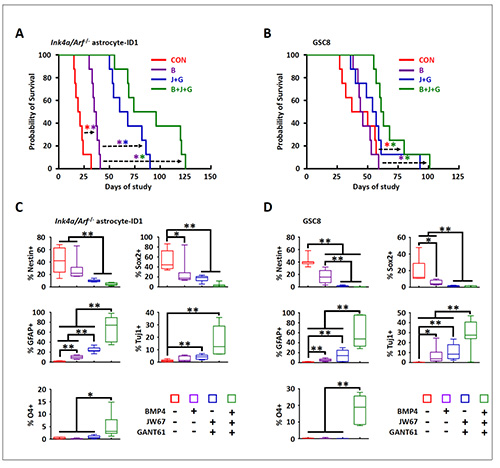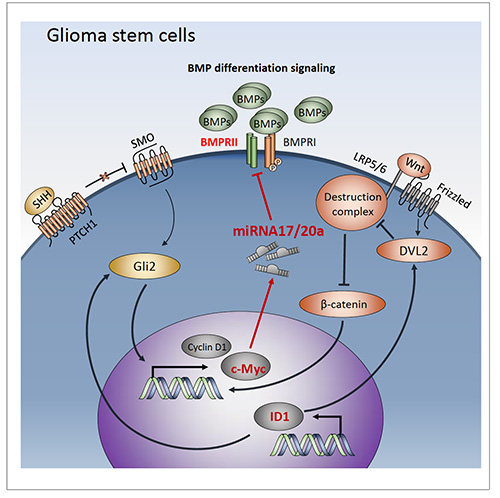Research Team, Led by Prof. Hyunggee Kim, Presents a Tumor Therapy Using Differentiation of Cancer Stem Cells
The findings, which represent a breakthrough for tailored drug use in treating types of cancer such as brain tumors, were published in Clinical Cancer Research

▲ Prof. Hyunggee Kim from the Division of Biotechnology, College of Life Sciences & Biotechnology
The research team led by Prof. Hyunggee Kim from the Division of Biotechnology, College of Life Sciences & Biotechnology, Korea University, drew attention with a breakthrough therapeutic strategy of combinatorial targeting of stemness and differentiation of cancer stem cells.
* Cancer stem cell: A handful number of cancer cells that have the ability of self-renewal and differentiation like adult stem cells
* Stemness: The ability to self-renew and differentiate into cancer cells
* Differentiation: The processes by which immature cells change into mature cells with specific functions
This work was supported by the Basic Science Research Program of the National Research Foundation of Korea (NRF) grant funded by the Ministry of Science, ICT and Future Planning, and the findings were published in Clinical Cancer Research on December 12.
- Title of the Article: Inhibition of ID1-BMPR2 intrinsic signaling sensitizes glioma stem cells to differentiation therapy
- Authors: Prof. Hyunggee Kim (corresponding author, Korea University), Dr. Xiong Jin (first author, Korea University), Hee-Young Jeon (co-author, Korea University), Eun-Jung Kim (co-author, Korea University), Jun-Kyum Kim (co-author, Korea University), Seon Yong Lee (co-author, Korea University)
Cancer stem cells, found in most tumor cells, cause initiation and differentiation of cancer. In addition, resistant to radiotherapy, cancer stem cells reinitiated cancer. While a tumor therapy targeting cancer stem cells has recently been studied, regulating their stemness poses a limitation to the therapeutic effects or causes of the recurrence of cancer.
The research team demonstrated the processes that induce the differentiation of cancer stem cells and presented the so-called “carrot and stick” strategy in order to regulate stemness and facilitate differentiation. The findings confirmed that Inhibitor of differentiation 1 (ID1) controls both stemness and differentiation. ID1 simultaneously promotes stemness through WNT and SHH signaling and suppresses differentiation through BMPR-mediated differentiation signaling in GSCs.
* ID1: Overexpressed in brain tumors, ID1 regulates differentiation of stem cells.
The survival rate of brain tumor-bearing mice was increased by regulating WNT and SHH signaling and activating BMP signaling in brain tumor stem cells. This proves the therapeutic possibility by inducing differentiation of glioblastoma stem cells (GSCs).
Prof. Kim said, “This study revealed the processes by which control differentiation of cancer stem cells, and proposed a novel therapeutic strategy of combinatorial targeting of stemness and differentiation to suppress tumor.” He added, “This study holds a promise for technological advances in developing tailored anticancer drugs targeting various types of cancer stem cells.
Terminology:
1. Cancer stem cell
○ Cancer stem cells that are found in most cancer tumors possess the ability of self-renewal and differentiation, similar to how normal stem cells act. Unlike other non-tumorigenic cancer cells, cancer stem cells are tumorigenic (tumor forming), known to cause metathesis and post-therapeutic recurrence of cancer.
2. Stemness
○ The ability to self-renew and differentiate into cancer cells.
3. Differentiation
○ The processes by which immature cells change into mature cells with specific functions.
4. ID1 (Inhibitor of Differentiation 1)
○ A helix-loop-helix transcription factor that lacks a basic DNA binding domain and combines with another helix-loop-helix transcription factor with the ability of DNA binding to regulate the transcriptional activation of genes. It is known to suppress transcription factors that induce cell proliferation, regulate cell differentiation, and maintain stemness.
5. Bone morphogenetic protein (BMP)
○ BMPs are considered to constitute a group of signals that promote the differentiation of stem cells. BMPR2 stands for BMP receptor II.
6. Tumor neurosphere forming ability
○ A characteristic found in which cancer stem cells are cultured in vitro. Cancer cells should generally grow attached to the bottom of the culture vessel. Instead, they float and form neurosphere when cultured in a certain serum.
7. Myc
○ Known as a transcriptional regulator that is overexpressed in several human cancers.
8. miRNA17/20a
○ As a microRNA family, it is known to promote tumors.
9. Glioblastoma
○ As a grade IV glioma, it is the most aggressive malignant glioma with tumor necrosis within an astrocytic neoplasm. The most common high-grade glioma accounts for a quarter of adult gliomas and 15 percent of childhood gliomas. The average life expectancy after diagnosis is less than 14 months.
10. Signaling pathway
○ A connectivity and dynamic change among molecules that involves a process in which the properties and functions of cells are maintained. During this process, a membrane receptor perceives an abnormal extracellular signal or change, which sets off a series of signaling events.
Figure Description:

Figure 1: Confirmed ID1 inhibited differentiation of GSCs through BMPR2 with transcriptional profiling
(A-C) Among all the IDs, only ID1 consistently showed a negative correlation with each lineage differentiation signature in at least three glioma gene expression datasets.
(D) The data from this negative correlation between ID1 and differentiation signatures was confirmed in microarray data from GSC in vitro.
(E-H) When ID1 decreased, BMPR2 genes increased the most.
(I) BMPR2 mRNA expression was consistently downregulated in glioblastoma (GBM) specimens compared with nontumorigenic brain or low-grade glioma specimens in multiple available gene expression patient datasets.
(J) Immunofluorescence image showed that in GBM tissue, Nestin (a neuronal precursor cell marker) and BMPR2 proteins were separately expressed in individual cells.
(K) The further analysis of the dataset for the effect of BMPR2 expression on overall survival of glioma patients showed that low transcript levels of BMPR2 significantly correlated with the worse patient prognoses.

Figure 2: Confirmed anticancer differentiation therapeutic strategy with mice experiment
(A-B) Tumor-bearing mice orthotopically implanted with GSCs with expression of two ID1 cells showed the best prognosis when combinatorial targeting of stemness (J, G) and differentiation (B).
(D) After the experiment, the glioma tumor tissue in the mice was extracted and the stem cell markers and differentiation cell markers were confirmed by immunochemotherapy. The most pronounced results were observed in the triple combined treatment group in the decrease of stem cell markers (Nestin, Sox2) while differentiation cell markers (GFAP, Tuj1, O4) increased substantially.

Figure 3: Presented a breakthrough cancer therapeutic strategy targeting cancer stem cells
ID1 increases the expression of Myc and miRNA-17/20a through WNT and SHH stem cell regulating signals, thus suppressing BMP. The experiment confirmed that suppressing stem cell control signaling while activating differentiation inducement signaling inhibits cancer stem cells as well as tumors, indicating a novel cancer therapeutic strategy.



